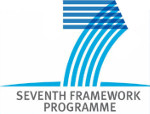Comparing two different Early Pleistocene microfaunal sequences from the caves of Atapuerca, Sima del Elefante and Gran Dolina (Spain): Biochronological implications and significance of the Jaramillo subchron
Cuenca-Bescós, Gloria (Universidad de Zaragoza) ; Blain, Hugues Alexandre ; Rofes, Juan ; Lozano-Fernández, Iván ; López-García, Juan Manuel ; Duval, Mathieu ; Galán, Julia (Universidad de Zaragoza) ; Núñez-Lahuerta, Carmen (Universidad de Zaragoza)
Resumen: No ideal method can be used alone to provide an accurate and irrefutable chronology for dating European Early Pleistocene localities. The solution lies in the combination of different, but complementary, approaches for complementing their chronological framework. In that regard, the results of the present study show that biochronology may be a useful additional tool to further refine the chronology of these localities, by providing not only relative chronological information between the sites, but also giving some important indications about a younger or older Jaramillo age.Our study presents the revised faunal list of each Early Pleistocene levels from the localities of Gran Dolina (TD) and Sima del Elefante (TE), in Atapuerca. Both localities have very likely the richest associations of small mammal species in the Quaternary of Europe. Perhaps the most striking observation is the lack of similarities between the assemblages from each site, which can only be explained by a chronological gap between them. Although the Jaramillo subchron has not been directly identified at Atapuerca, the existing chronostratigraphical framework combined with similarities of the faunal assemblages between Gran Dolina and Vallparadís indicate with some confidence that Sima del Elefante levels are older than the Jaramillo subchron. Consequently, the Early Pleistocene levels of both Atapuerca sites TE and TD are the only sequence from Spain that allows the study of a continuous stratigraphic succession of the interval around the Jaramillo subchron in terrestrial sequences. The biostratigraphy of the Early Pleistocene from Europe, based mainly in the few isolated localities of the Olduvai-Jaramillo time interval, is reinforced by the faunal succession of the Atapuerca sites.
Idioma: Inglés
DOI: 10.1016/j.quaint.2014.12.059
Año: 2015
Publicado en: Quaternary International 389 (2015), 148–158
ISSN: 1040-6182
Factor impacto JCR: 2.067 (2015)
Categ. JCR: GEOSCIENCES, MULTIDISCIPLINARY rank: 67 / 184 = 0.364 (2015) - Q2 - T2
Categ. JCR: GEOGRAPHY, PHYSICAL rank: 24 / 49 = 0.49 (2015) - Q2 - T2
Factor impacto SCIMAGO: 1.167 - Earth-Surface Processes (Q1)
Financiación: info:eu-repo/grantAgreement/EC/FP7/629604/EU/Post-glacial recolonisation and Holocene anthropization impact on populations of shrews and hedgehogs from Western Europe inferred from zooarchaeology, historical biogeography and ecological modeling/SMALL_MAM_RECOL
Financiación: info:eu-repo/grantAgreement/ES/MICINN/CGL2006-13532-C03-02
Financiación: info:eu-repo/grantAgreement/ES/MICINN/CGL2009-12703-C03-01-02-03
Financiación: info:eu-repo/grantAgreement/ES/MINECO/CGL2012-38434-C03-01
Financiación: info:eu-repo/grantAgreement/ES/UZ/IUCA-H54
Tipo y forma: Artículo (PostPrint)
Área (Departamento): Área Paleontología (Dpto. Ciencias de la Tierra)
 Debe reconocer adecuadamente la autoría, proporcionar un enlace a la licencia e indicar si se han realizado cambios. Puede hacerlo de cualquier manera razonable, pero no de una manera que sugiera que tiene el apoyo del licenciador o lo recibe por el uso que hace. No puede utilizar el material para una finalidad comercial. Si remezcla, transforma o crea a partir del material, no puede difundir el material modificado.
Debe reconocer adecuadamente la autoría, proporcionar un enlace a la licencia e indicar si se han realizado cambios. Puede hacerlo de cualquier manera razonable, pero no de una manera que sugiera que tiene el apoyo del licenciador o lo recibe por el uso que hace. No puede utilizar el material para una finalidad comercial. Si remezcla, transforma o crea a partir del material, no puede difundir el material modificado.
Exportado de SIDERAL (2021-01-21-11:08:38)
Visitas y descargas
Idioma: Inglés
DOI: 10.1016/j.quaint.2014.12.059
Año: 2015
Publicado en: Quaternary International 389 (2015), 148–158
ISSN: 1040-6182
Factor impacto JCR: 2.067 (2015)
Categ. JCR: GEOSCIENCES, MULTIDISCIPLINARY rank: 67 / 184 = 0.364 (2015) - Q2 - T2
Categ. JCR: GEOGRAPHY, PHYSICAL rank: 24 / 49 = 0.49 (2015) - Q2 - T2
Factor impacto SCIMAGO: 1.167 - Earth-Surface Processes (Q1)
Financiación: info:eu-repo/grantAgreement/EC/FP7/629604/EU/Post-glacial recolonisation and Holocene anthropization impact on populations of shrews and hedgehogs from Western Europe inferred from zooarchaeology, historical biogeography and ecological modeling/SMALL_MAM_RECOL
Financiación: info:eu-repo/grantAgreement/ES/MICINN/CGL2006-13532-C03-02
Financiación: info:eu-repo/grantAgreement/ES/MICINN/CGL2009-12703-C03-01-02-03
Financiación: info:eu-repo/grantAgreement/ES/MINECO/CGL2012-38434-C03-01
Financiación: info:eu-repo/grantAgreement/ES/UZ/IUCA-H54
Tipo y forma: Artículo (PostPrint)
Área (Departamento): Área Paleontología (Dpto. Ciencias de la Tierra)
Exportado de SIDERAL (2021-01-21-11:08:38)
Enlace permanente:
Visitas y descargas
Este artículo se encuentra en las siguientes colecciones:
Artículos
Registro creado el 2018-03-19, última modificación el 2021-01-21
